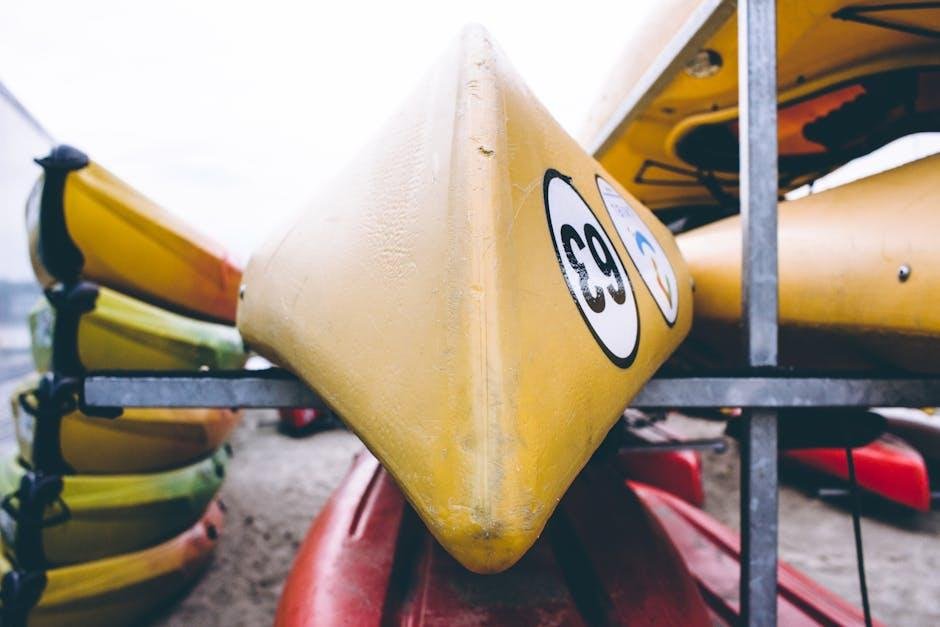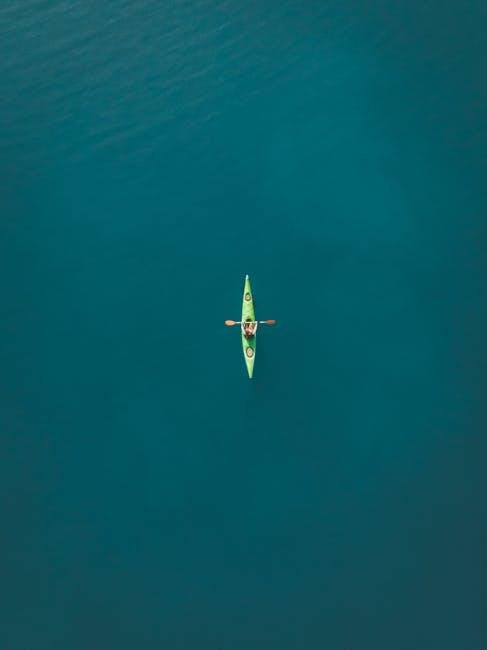Embarking on a solo kayaking adventure can evoke a sense of both excitement adn trepidation. The gentle lapping of water against the hull, the whisper of the wind weaving through the trees, and the promise of solitude on a vast expanse of water all beckon the adventurous spirit. Yet, for those who are navigating the waters alone for the first time, the experience can feel daunting. Whether you’re seeking tranquility in nature or the thrill of exploration, planning is key to ensuring your maiden voyage is both safe and enjoyable. In this guide, we will navigate through essential tips and insights that will help you confidently set sail on your first solo kayaking experience, turning your fledgling adventure into a memorable journey.So grab your paddle and let’s chart a course towards exploration!
Preparing for Your Journey: Essential Gear and Safety Considerations
Before you set off on your kayaking adventure, equipping yourself with the right gear is crucial. Start with a high-quality life jacket that fits snugly and is Coast Guard-approved. Ensuring you stay visible is equally crucial, so consider a brightly colored kayak and wear reflective clothing. Other essentials include a paddle leash to prevent losing your paddle, a dry bag for keeping personal items safe from water, and a whistle for signaling in case of emergencies.Here’s a rapid checklist of items to make sure you’re fully prepared:
- Life Jacket
- Paddle
- Paddle Leash
- Dry Bag
- Whistle
- First Aid Kit
- Sun Protection (sunscreen, hat)
Safety should always be a top priority when embarking on your first solo kayaking trip. Before you hit the water, familiarize yourself with local regulations and check weather conditions to avoid sudden changes that may affect your plans. It’s advisable to share your itinerary with a trusted friend or family member.For navigation, invest in a waterproof map or a GPS device designed for aquatic environments. Below is a simple overview of necessary considerations:
| Consideration | Description |
|---|---|
| Weather Check | Always verify the forecast. Avoid strong winds or storms. |
| Emergency Contact | Inform someone about your plans. |
| Navigation Tools | Bring a waterproof map or GPS for orientation. |

Navigating the Waters: Understanding Kayak Techniques and Techniques
Understanding the fundamental techniques of kayaking is crucial for your solo journey. Paddle strokes form the backbone of effective maneuvering on the water. Here are some essential strokes to master:
- Forward Stroke: Keep your torso engaged; twist your core while bringing the paddle back towards your hips.
- Reverse Stroke: Similar to the forward stroke,but in reverse—this helps you stop and backtrack.
- Draw Stroke: Use this when you need to pull the kayak sideways toward your paddle; its great for navigating tight spots.
In addition to strokes, maintaining balance and stability is key while out on the water.Here’s a quick overview of tips for keeping your kayak steady:
| Tip | Description |
|---|---|
| Center Your Weight | Distribute your weight evenly, sitting upright in the kayak to maintain balance. |
| Use Your Core | Engage your core muscles for stability, allowing for smoother turning and paddling. |
| Look Ahead | Avoid looking down; instead, focus on the direction you’re heading to help maintain balance. |

Choosing the Right Destination: Ideal Kayaking Spots for Beginners
When setting out on your first solo kayaking adventure, choosing a suitable destination is essential for ensuring a positive experience. Beginners should look for locations that offer calm waters and gentle currents. Consider places like local lakes, slow-moving rivers, or protected coastal areas. These environments not only provide ample chance to practice paddling skills but also allow inexperienced kayakers to feel more secure in their surroundings. Ideal spots for first-timers often include:
- State Parks: Many have designated kayaking areas with scenic views.
- Lakes: Flat water and little wave action create a safer setting.
- Estuaries: These frequently enough have mild currents and beautiful wildlife.
- Canals: Generally free from waves and suitable for casual exploration.
Additionally, it’s helpful to check local rental shops or guided tours, which can provide additional insights and equipment suited for beginners. Be sure to factor in proximity to amenities like restrooms and food options for longer outings. In selecting the perfect destination, consider the level of instruction available, weather conditions, and group size. Here’s a brief table showcasing a few ideal kayaking spots:
| Location | Type | Best Time to Visit |
|---|---|---|
| Lake Tahoe | Lake | summer |
| Florida Keys | Coastal | Spring |
| Mississippi River | River | Fall |
| Chesapeake Bay | Estuary | Summer |

Embracing the Adventure: Mindset and Tips for Enjoying Your Solo Experience
Stepping into the world of solo kayaking can be a thrilling yet daunting experience, and embracing the adventure begins with the right mindset. It’s essential to approach your journey with an open heart and a spirit of curiosity. Allow yourself to be present in the moment and appreciate the beauty of nature around you. Focus on the joy of solitude; use this time to reconnect with yourself and discover the serenity that comes with paddling alone. Remember, it’s not just about the destination but the experience itself—each ripple of water, each bird call, and each gentle breeze contributes to your adventure.
To enhance your experience, consider these helpful tips:
- plan Ahead: Research your route, check weather conditions, and familiarize yourself with safety guidelines.
- Paddle at Your Pace: Don’t rush; enjoy the rhythm of your strokes and the tranquility of the surroundings.
- Stay Hydrated and Energized: pack plenty of water and snacks to keep your energy levels up during the paddle.
- Keep a Safety Kit: Ensure you have a whistle, first aid supplies, and emergency contact data.
Final Thoughts
As you embark on your first solo kayaking adventure, remember that each stroke you take brings you closer to both the serene waterways and a deeper understanding of yourself. Embrace the learning curve, celebrate the small victories, and allow nature to envelop you in its calming embrace. Whether you’re gliding over still waters or navigating gentle rapids, take comfort in the fact that every experience will enrich your journey. So, gear up, paddle out, and let the world unfold beneath you as you chart your own course.The only limit is the horizon ahead.Safe paddling!
